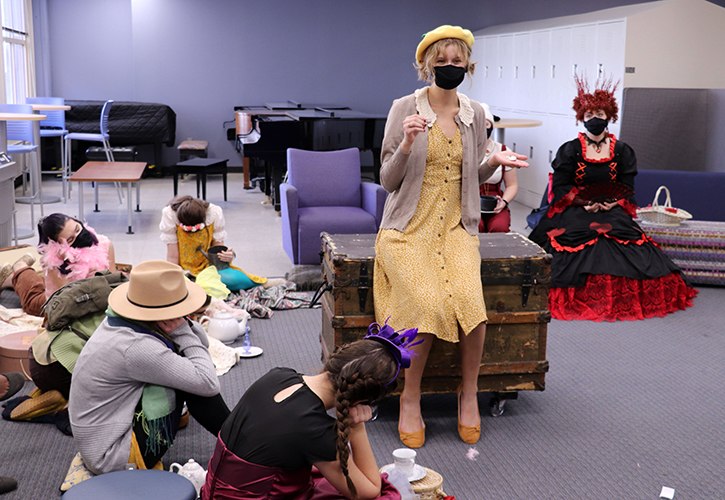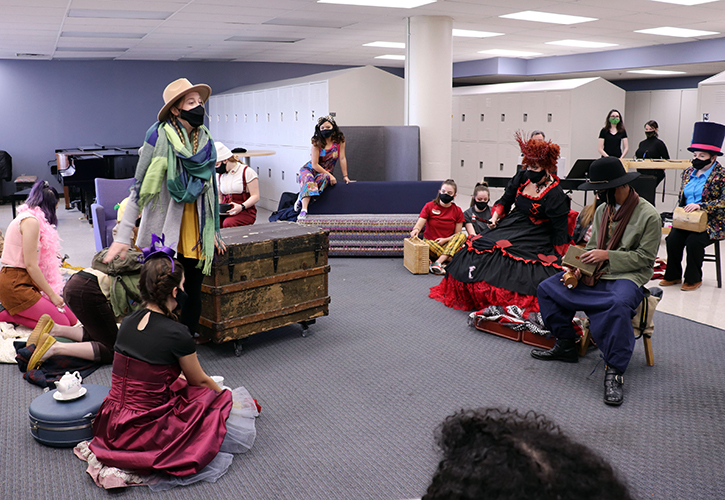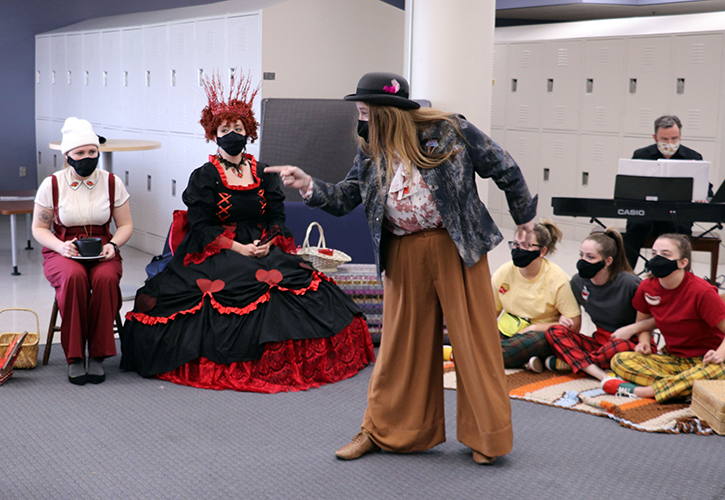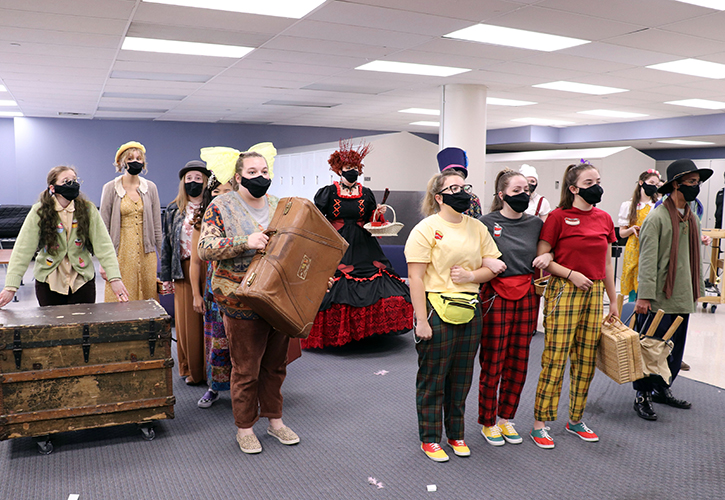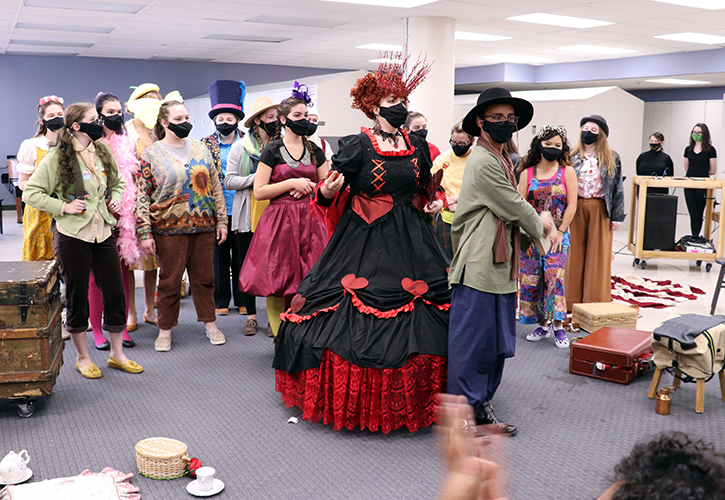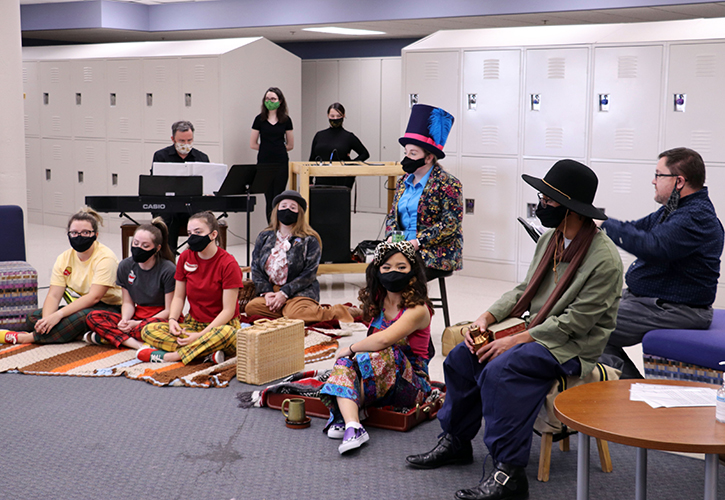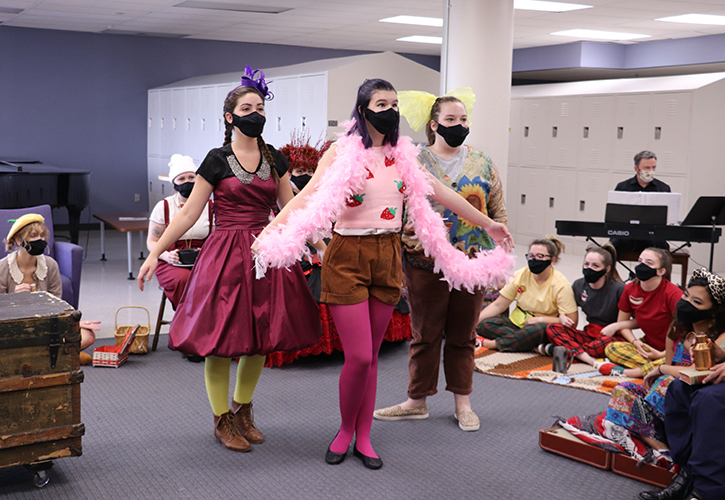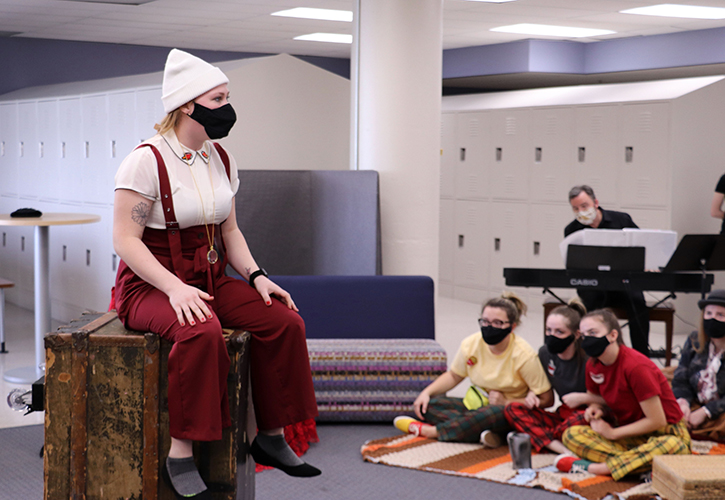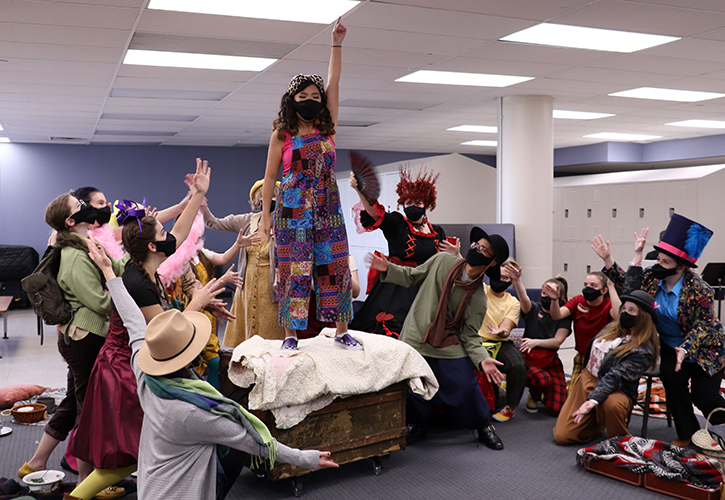College of Arts and Sciences Newsroom
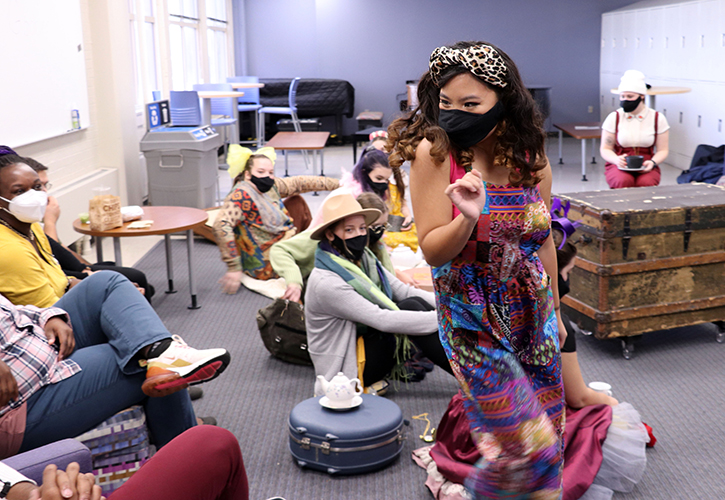
University of Dayton music and theater students call on theatrical tradition with pop-up opera performances across campus
By Kassidy Lammers ’24
Like a medieval troupe of actors, University of Dayton students took the show on the road this semester with a series of pop-up performances of Through the Looking Glass, and What You Found There.
The performances marked the finale of a collaboration between the Department of Music and the Theatre, Dance and Performance Technology program in a musical and opera workshop class.
There was some uncertainty as to whether it would be possible to host performances in the Kennedy Union Boll Theater this fall because of campus COVID-19 safety protocols.
Pop-up productions are a long-held tradition in drama, dating back first to traveling storytellers in ancient societies and later to roving troupes of actors in Europe throughout the Middle Ages. During November, students performed in Raymond L. Fitz Hall, Roesch Library, Kennedy Union and the Science Center.
“Some places were offered, but we all came to the decision that it would be really beneficial for our students in the class to be able to experience this style of performance that has been around for centuries,” said Jerome Yorke, assistant professor of theater. He taught the course with Andrea Wells and David Sievers, both artists-in-residence in voice.
Through the Looking Glass, and What You Found There is an operatic adaptation of Lewis Carroll’s Alice’s Adventures in Wonderland and its 1871 sequel.
Yorke said this adaption was an ideal candidate for the pop-up approach because it is structured in chapters and could be told in parts. This approach allowed students and faculty to go forward with the performance, while respecting the health and safety of everyone involved.
Preparation for Through the Looking Glass, and What You Found There began on the first day of the 2021 fall semester. Students were assigned songs that they would perform during the production, all of which centered around a common theme of searching for authenticity as individuals.
“We were able to select music that highlighted each student’s particular strength and ability to try and show them off as best we could,” Wells said.
Performing these selections in different locations was one of many challenges in preparing the production, but it provided students an opportunity to foster their skills as performers.
“In some ways, I think it almost helped, because they had to really work on their own technical skill to project sound, because they couldn’t rely on the space to help,” Sievers said.
Despite taking place outside of a traditional theater, the performances still included many common aspects of dramatic productions. Students wore full costumes and made use of props to help create a more complete performance environment in each location.
Even with the consistent costuming and props, each performance varied from the last. Along with the frequent changes in scenery, the audience was also different for each pop-up production.
“Pop-up performances can feel quite challenging because you never know who you are going to get as an audience,” said Darian Watson, a theater major from Tipp City, Ohio, who portrayed the Caterpillar. “Although this can make it hard to plan, it also makes it exhilarating when you do succeed.”
Audience interaction was a unique aspect to the pop-up approach. Yorke said one of the key takeaways from the experience was “getting to engage with a community that doesn’t necessarily get to see the students in this light.”
Each performance took place in an area that offered nearby, unsuspecting students and faculty a chance to watch the short selections and interact with the cast more intimately than is possible with traditional performances.
“There is a freedom in making theater without the infrastructure of a theater around you that I think is really empowering,” Wells said. The personal nature of pop-up performances allowed the production to have a more immediate impact on the audience than if it were performed within the confines of Boll Theater.
While producing Through the Looking Glass, and What You Found There, the cast was tasked with getting to know themselves better through their characters. The hope was that, through personal interaction with the audience, the cast would inspire viewers to pursue a similar journey of self-discovery.
“We hope that all of those same elements from the authentic performer-self radiate out, and the audience is also able to take that out into their own lives,” Yorke said. “That is the power of storytelling and being able to step into characters, to be able to do that. It’s really beautiful.”
The performers were able to walk away having benefited from the experience, as well.
“I feel like my energy for theater has returned,” Watson said. “With the pandemic causing performances and opportunities to be cancelled, I felt myself lose the drive for performing in the arts. This show has restored that drive, and made it stronger than ever before. I’m very grateful for that.”
For more information, visit the Department of Music and Theatre, Dance and Performance Technology program websites.

